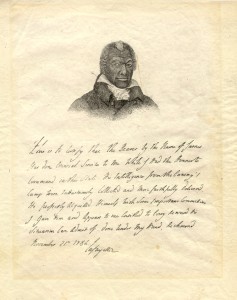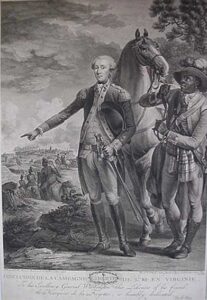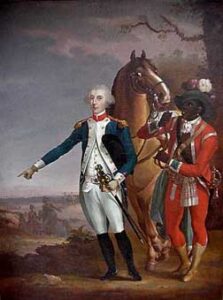James Armistead Lafayette
A personal reason for Lafayette’s interest in emancipation may have been his association with the slave, James Armistead, during the Revolutionary War. With the permission of his master, Armistead volunteered for service with Lafayette during the siege of Richmond in 1781. Before long, he was performing important espionage service behind enemy lines, masquerading as an escaped slave while he obtained information about the plans and movements of the British. He continued his spying as a servant in Cornwallis’s camp during the Yorktown Campaign and relayed intelligence to Lafayette that helped bring about the American victory at Yorktown. When Lafayette returned to America in 1784, he wrote a special testimonial about Armistead’s service and was instrumental in helping the slave win his freedom from the Virginia General Assembly in 1787. In tribute to Lafayette, James Armistead adopted the surname Lafayette, which he used for the rest of his life. When Lafayette again returned to America in 1824, he visited Richmond and recognized his old associate in the crowd. According to a local newspaper account, Lafayette called him by name and took him into his embrace.
Marquis de Lafayette’s testimonial to James Armistead
Lafayette composed the text of this testimonial in 1784 in gratitude for the services rendered by James Armistead. In 1824, the Richmond artist, John Blennerhasset Martin, created this broadside, featuring a facsimile of Lafayette’s text and a likeness of James Armistead made from an earlier painting by the artist.

This is to certify that the bearer by the name of James has done essential services to me while I had the honour to command in this state. His intelligences from the enemy’s camp were industriously collected and faithfully delivered. He perfectly acquitted himself with some important commissions I gave him and appears to me entitled to every reward his situation can admit of. Done under my hand, Richmond, November 21st, 1784.
Lafayette


